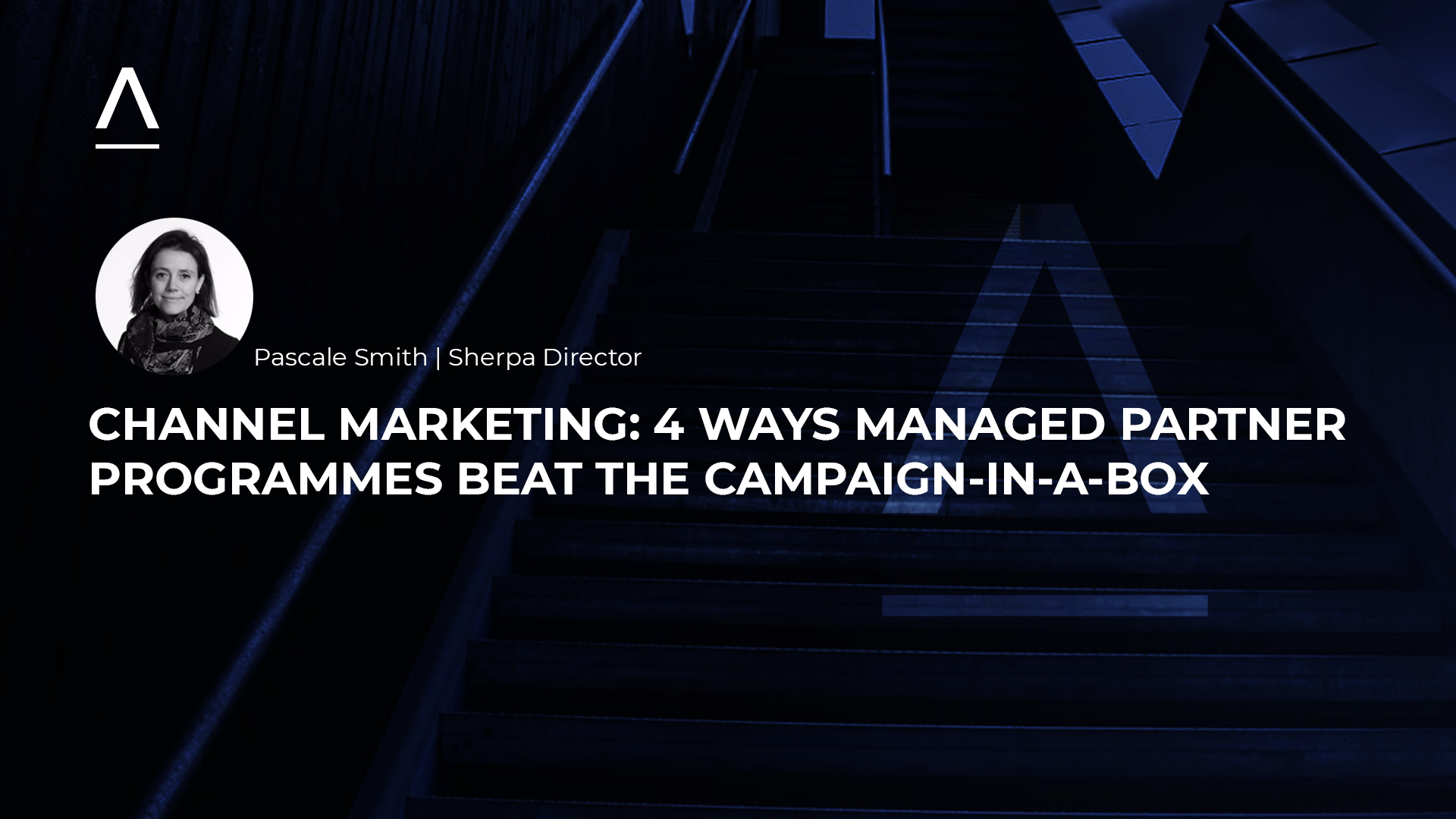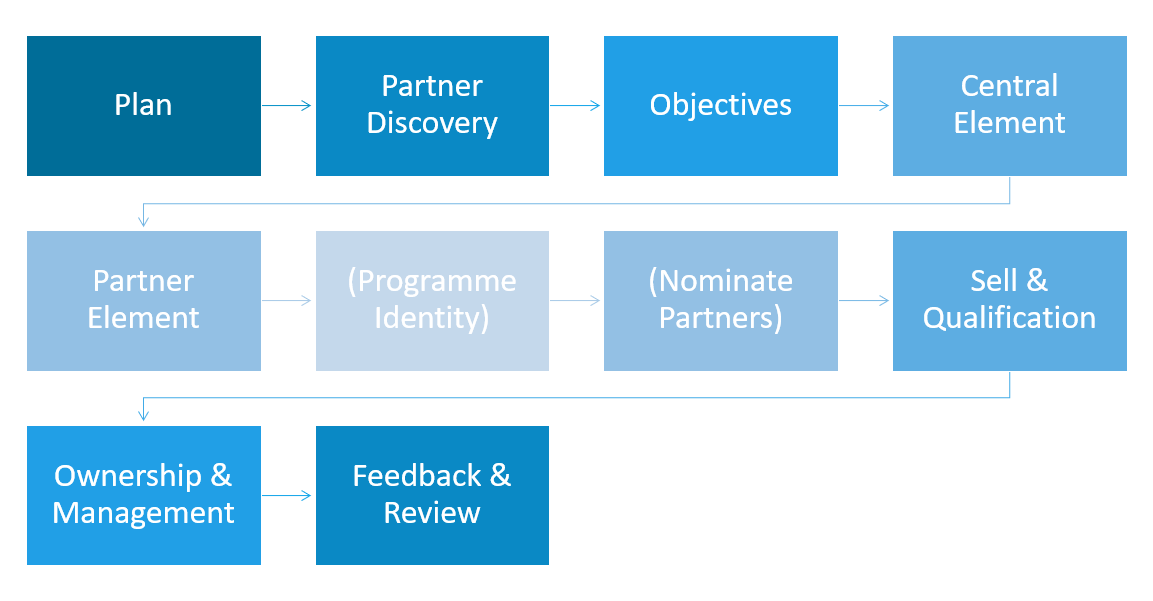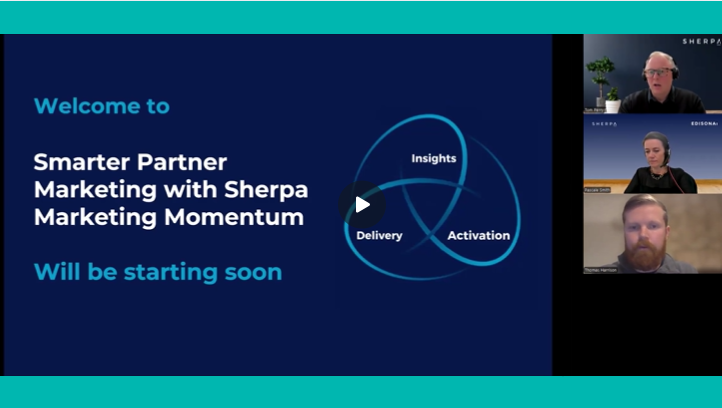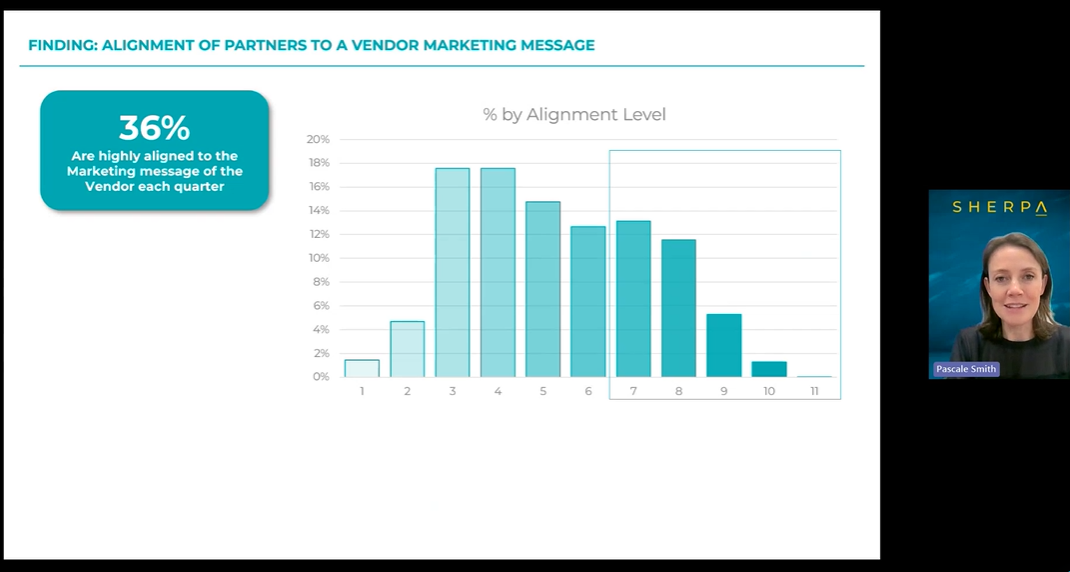On-demand webinar: The Partner Marketing Funnel: Introducing the 4 Why's
Partner marketing isn’t just about generating leads. It’s about moving opportunities through the funnel with clarity and purpose. Yet for many...
5 min read
 Pascale Smith
Dec 21, 2020 2:20:47 PM
Pascale Smith
Dec 21, 2020 2:20:47 PM

The demands made of channel Partner marketing are significant: it needs to scale, demonstrate ROI, generate revenue (often within a quarter), reflect modern marketing best practice and it needs to align to Vendor objectives. And it needs to do all this in what is a hugely varied environment comprising Partners with different levels of skill, resource, budget and commitment.
Yes, when it comes to channel Partner marketing, there is a lot for Vendors to consider and often not a lot of resources to do it. As a result, many Vendors use ‘campaign-in-a-box’ type solutions, a kind of catch-all, minimal coverage model of channel Partner marketing. What we are seeing is that this is not realising the true potential value of Partners. Nor is it creating long-term value from Partner marketing funds.
As a specialist channel agency, we at Sherpa are seeing a lot of inertia in the catch-all, one-size-fits-all approach. There is a huge amount of variation and differentiation among Partners and, quite simply, the campaign-in-a-box doesn’t appeal to, or fully capture what they do and how they see themselves. This gives it low perceived value, which is only exacerbated by the difficulty in measuring results that are typical of Partner marketing. While in some scenarios and for some Partners it works well, campaign-in-a-box is not best practice and assumes a level of alignment and buy-in that doesn’t necessarily exist.
👉 Related Partner Marketing Programmes Go-To-Market Insights Report
Sherpa is passionate about developing and communicating channel Partner marketing best practice. Our view is that, while there is nothing inherently wrong with the campaign-in-a-box approach, marketing has moved on. Technology buyers in particular have different expectations around how they are marketed to, and the relevance of marketing to them. Campaign-in-a-box should thus be viewed as a starting point, and we as the channel community need to move on from and develop this, as we know we can do better, for Partners and for Vendors. It is incumbent on us to build on these baby steps and develop something more functional and fit for purpose.
This is why a managed Partner programme will always outperform a campaign-in-a-box approach – we’ve proved this time and time again – and here’s why.
The Partner market is hugely variant; campaigns in a box, by definition, are not. They are one size fits all in an environment characterised by its diversity – indeed, the whole point of Partner marketing is the different points of access to different markets and end customers. Add to that, that not all Partners are equal – they are unequal in their capacities, but also in what they’ll deliver back to the Vendor. Success in channel comes with Partner differentiation, a multi-layered, differentiated programme that meets the different needs of Partners. The key advantage of campaigns in a box is scalability – but there are ways to make channel Partner marketing both scalable and nuanced.
This isn’t an argument against a tiered Partner structure – channel will always be a pyramid, with – often, but not always! – 20% of Partners at the top giving you 80% of the revenue. Campaign-in-a-box is often ideal for those at the bottom of the pyramid, giving them a sense of what the Vendor is about and giving them something to aspire to. For those at the top, though, we need to do much more, in a more Partner-specific way.
There needs to be a journey. For the Partner, this journey is from the bottom to the top of the pyramid, as Partners transition and move up the engagement and loyalty ladder. For the Vendor, it’s a journey of discovery, understanding and reaching target markets through your Partners, who will tell you when your generic messaging doesn’t apply in a vertical or sub-vertical. A nuanced programme provides a two-way street; a genuine Partnership between Vendor and Partner that builds an accountability loop if all parties understand and support the objectives.
A nuanced approach to channel enables better Partnerships through increased alignment, understanding, education and demonstration of commitment. In channel, alignment between the Partner marketing team and Partner sales team, for example, is key.
Alignment is also about aligning with your Partners – understanding your Partners at a granular level. What are their aspirations? How are they going to market and how are they generating revenue? One of the key challenges for any kind of marketing is if campaigns are developed without reference to the sales or client-facing teams. Account-based marketing (ABM) principles – alignment between marketing and sales – create cohesiveness.
While revenue is of course the key metric, ROI is notoriously hard to measure and demonstrate in channel marketing, as it’s not always direct or immediate. This is yet another mould we need to break. Modern channel marketing programmes should consider intermediate objectives on the way to revenue, such as those related to Partner maturity.
For example, a programme could support new Partners’ time to cash; could identify Partners with great potential and help them to reach the next tier; could create specialised Partners, or be focused on strategic alliance Partners. An objective-led programme that reviews key goals or milestones along the path to ROI, is a great way to make improvement adjustments and evaluate Partner value.
Perhaps most importantly, improving on the campaign-in-a-box model indicates progress in the channel community, representing innovation and best practice. We are always aspiring to improve because the Vendor environment is competitive and we should be bringing innovation to Partners to overcome inertia and constantly move forward.
Vendors need to be taking Partners on this journey, in a coming together of Vendor solution and Partner expertise, turning that into something compelling and articulating it to the market. This way, they can create campaigns that suit their markets and offer great value for the Vendor and Partner alike. It’s not just us that are thinking and saying this – we’re hearing it from analysts, and from Partners themselves: campaign-in-a-box is old hat, the channel needs and expects more.
So, what does an evolved Partner programme look like? Channel is all about creating structure around a group of people who all act differently. This will always be a challenge, and there will always need to be a certain amount of tiering and infrastructure to allow you to do that at scale. But nuance can be incorporated at scale through managed Partner programmes. This isn’t about taking it entirely out of the box, but boxing smarter, in a way that doesn’t look or feel like it for Partners.
👉 Related [On-Demand Webinar] Channel Partner Marketing: One Size Does Not Fit All
By introducing another dimension to your marketing programme, we can achieve this greater sophistication and nuance that we’re trying to reach. Programmes can include different sets of activities aligned to different objectives for different tiers, and associated with different levels of investment. This doesn’t require a huge budget, but has a huge impact: Partners perceive these activities as genuinely enabling, with the focus being on them and their needs, and so become more closely engaged with the Vendor than ever before, strengthening the relationship.
Here are the key steps to take to develop a scalable Partner marketing programme fit for the demands of today's evolved channel Partner landscape.
 At Sherpa, we specialise in the development of advanced Partner marketing programmes and spend a lot of time selling programmes to Partners, qualifying them and getting their buy-in as this is essential to making the programme work.
At Sherpa, we specialise in the development of advanced Partner marketing programmes and spend a lot of time selling programmes to Partners, qualifying them and getting their buy-in as this is essential to making the programme work.
I’ve only discussed the tip of the iceberg in this post, but I hope you’ve got a sense of a different mindset around channel programme development that we hope to see more of.
---------------------------------------------------------------
For more information or to discuss how Sherpa can help you, please get in touch:
.jpeg)
Partner marketing isn’t just about generating leads. It’s about moving opportunities through the funnel with clarity and purpose. Yet for many...

Partner marketing is entering a new era.

Partner marketing isn’t just evolving, it’s accelerating. With buying committees now stretching to 20+ decision-makers, AI reshaping how we work, and...

Ready to Work Smarter, Not Harder? Below is a deep-dive into our new approach to Partner Marketing, Sherpa Marketing Momentum. Powered by our class...

Partner Marketing is a collaborative approach where two or more entities join forces to amplify their reach, drive sales, and achieve mutual business...

Struggling with partner adoption in your marketing campaigns? In this executive spotlight, Pascale shares how data-driven insights can help overcome...